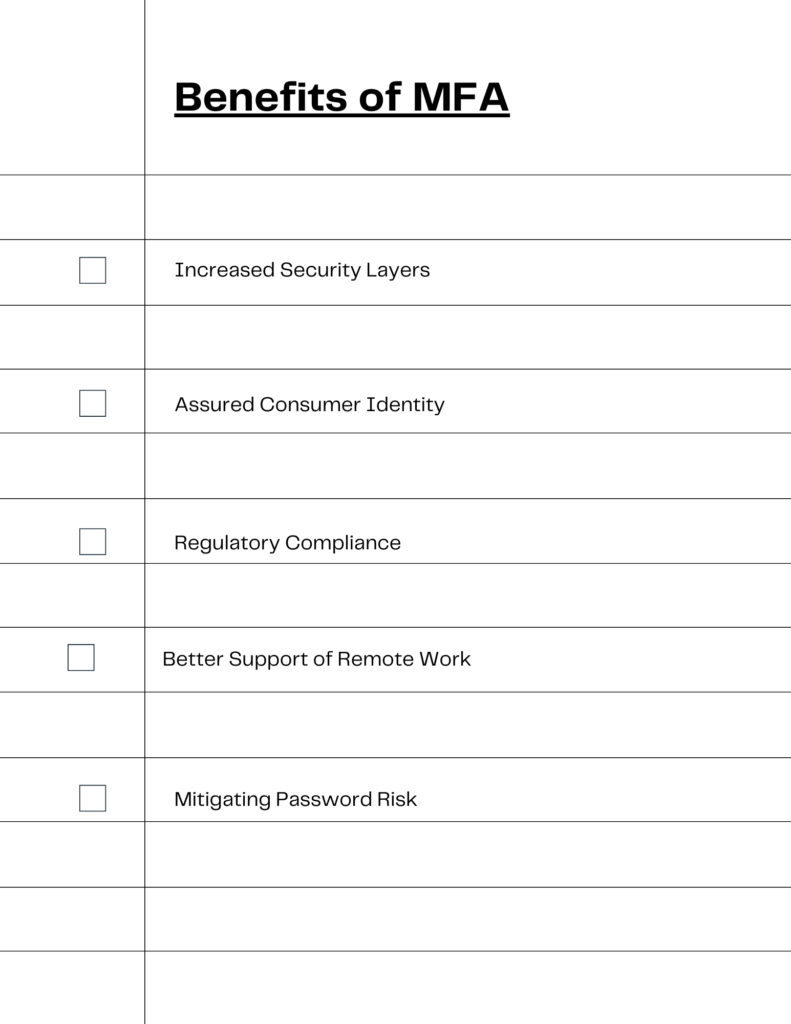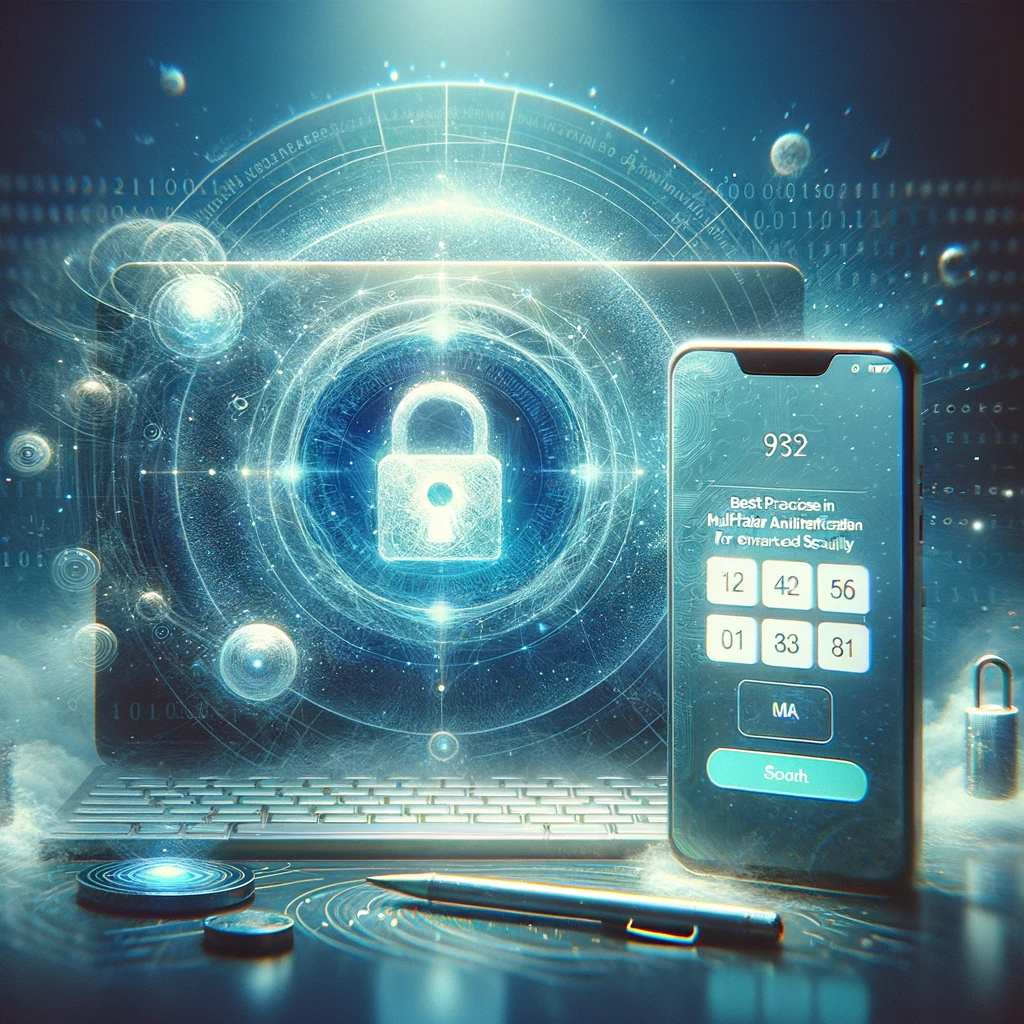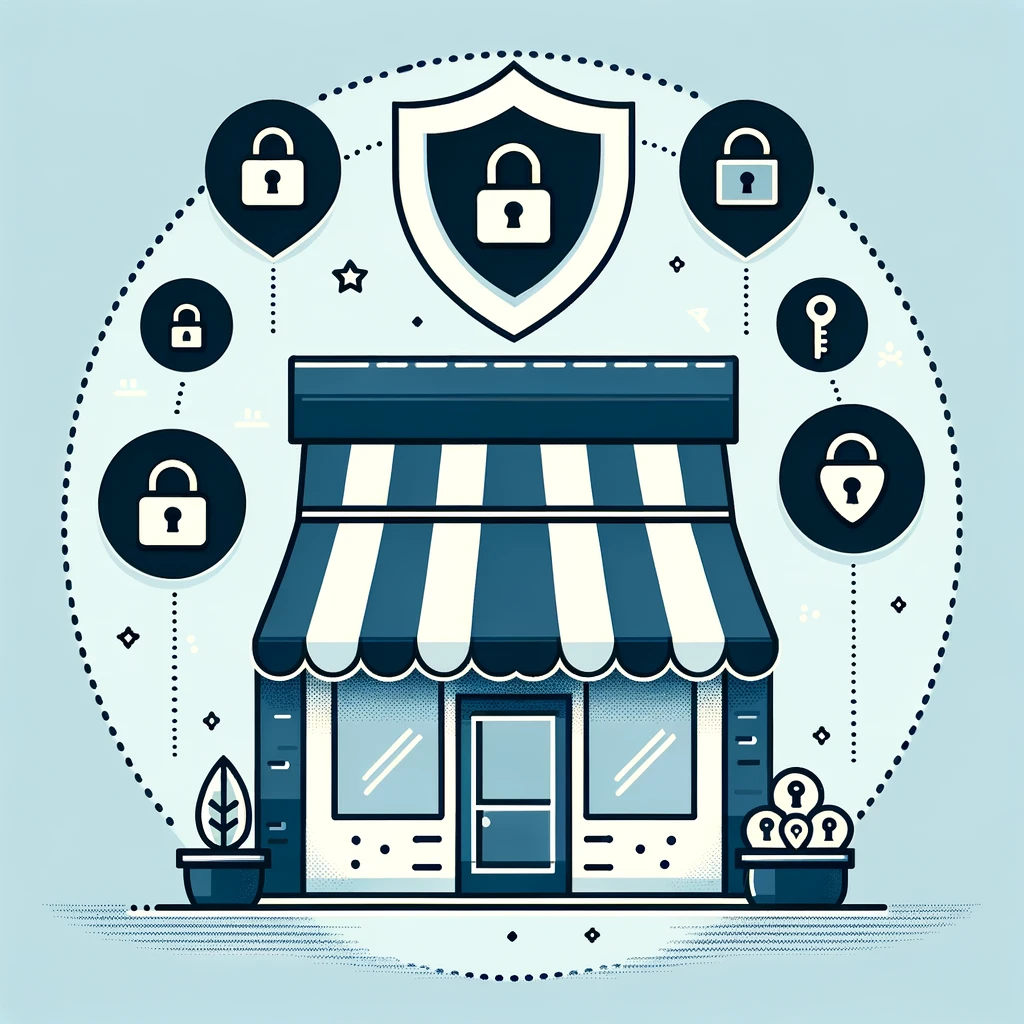Introduction to the Benefits of Multi-Factor Authentication: Your Key to Enhanced Security
Today, data breaches and cyber threats are increasingly common. The importance of robust security measures cannot be overstated. Multifactor Authentication benefits can enhance protection beyond the traditional password.
MFA is an authentication method that requires two or more verification methods. It marks a substantial shift from the conventional reliance on passwords alone.
The Distinction Between MFA and 2FA as Authentication Methods
Since the start of the internet, passwords have lbeen the cornerstone of most security systems. They are no longer sufficient in the face of sophisticated cybercriminals.
This is where MFA steps in. It adds multiple layers of security by requiring additional verification beyond just a password.
This approach drastically reduces the risk of unauthorized access. This is in stark contrast to the vulnerability inherent in using single-factor authentication.
What are the full scope of MFA’s benefits? Let’s differentiate it from Two-Factor Authentication (2FA).
2FA is a subset of MFA. It requires exactly two methods of verification. MFA provides a more comprehensive security framework. It can incorporate several authentication factors.
This article emphasizes the role of MFA and 2FA in digital security. It outlines the process of moving beyond traditional password systems. It highlights the benefits and implementation steps of MFA and 2FA.
The article covers the advantages of adaptive MFA over standard methods. It offers a step-by-step guide for setting up MFA. The artcile discusses best practices to avoid common pitfalls.
Ultimately, it urges readers to adopt these advanced security measures. This will protect against the increasing threats in the cybersecurity landscape. This underscores their necessity for safeguarding sensitive data and systems.
Maximizing Safety with 2FA: The First Step towards MFA
2FA is often the first significant step. 2FA ensures that gaining access to sensitive data isn’t as straightforward as deciphering a single password.
This section explains what 2FA is. It goes into its role in cybersecurity and its function as a foundational component of MFA.
How to Implement and Use 2FA as Part of Your MFA Strategy
Implementing 2FA is a straightforward yet impactful way to enhance your security posture. Here’s a step-by-step guide to integrating 2FA into your existing security measures:
- Choose a 2FA Method. Decide on the form of authentication to pair with your password. Examples are a text message code, an authenticator app, or a biometric factor.
- Update Security Policies. Revise your organization’s security policies to include 2FA requirements. This ensures compliance and widespread adoption.
- Educate Users. Inform all users about the new 2FA system. Explain its importance and how it operates to secure their login credentials.
- Implement 2FA Across Platforms. Apply 2FA to all relevant platforms. This includes email, internal systems, and any other areas requiring secure access.
- Regularly Review and Update. Regularly assess the effectiveness of your 2FA setup. Make necessary updates to adapt to new security challenges or technological advancements.
Two-Factor Authentication (2FA) significantly strengthens security measures. It addresses several vulnerabilities inherent in password-only systems:
- Preventing Unauthorized Access. 2FA creates an additional barrier even if a password is compromised. This makes unauthorized access much harder.
- Reducing Phishing Effectiveness. The success of phishing attacks can be reduled by adding a second form of verification.
- Thwarting Automated Attacks. Automated scripts used in brute force attacks struggle against 2FA. This is because it requires unpredictable, human-specific verification.
- Enhancing Compliance and Data Security. 2FA fortifies security. Moreover, it also aligns with many regulatory standards, ensuring both protection and compliance.
- Building User Trust. The added security layer of 2FA boosts user confidence in system safety. This is particularly true for protecting sensitive information.
2FA thus plays a crucial role in enhancing cybersecurity. It offers a robust countermeasure to the limitations of password-based security.
Digging Deeper: The Benefits of Using Multi-Factor Authentication (MFA)

Let’s explore the realm of Multi-Factor Authentication (MFA). As we do, it becomes evident that this security measure extends far beyond the initial layers of defense provided by 2FA.
MFA encompasses a broader range of security protocols. Each protocol adds its unique layer to safeguard sensitive data and access points.
In this section, we will explore the diverse benefits MFA offers.
Exploring the Various Benefits of Using MFA in Your Security Protocol
MFA’s multifaceted nature makes it an invaluable tool in the cybersecurity arsenal. Its benefits include enhancing user authentication. It also fortifies data security against evolving threats:
- Increased Security Layers. MFA employing multiple security layers. By doing so, MFA reduces the risk of successful attacks from various sources. Sources including phishing, social engineering, and credential theft.
- Assured Consumer Identity. Users feel more secure knowing that their accounts are protected by robust MFA measures. This leads to increased trust and reduced anxiety about data breaches.
- Compliance with Regulatory Standards. MFA helps organizations meet compliance requirements. This ensures data protection in line with industry standards.
- Better Support of Remote Work. MFA ensures that an employee’s remote login is genuinely legitimate.
- Mitigation of Password Risk. MFA increases the difficulty for unauthorized entities to breach accounts. MFA requires multiple authentication factors beyond a password.
In summary, MFA provides a comprehensive security approach that challenges unauthorized access. Moreover, it also evolves with the changing landscape of cyber threats.

MFA integrates into various security protocols. This signifies a proactive step towards a more secure digital environment. MFA offers peace of mind for both users and administrators.
Enhancing Security Beyond Passwords with MFA
The move from traditional password-only security to MFA marks a significant leap in cybersecurity. MFA’s approach of requiring multiple forms of verification fundamentally transforms the security landscape.
- Layered Defense Strategy. MFA adds several layers of defense. This making it exponentially more challenging for unauthorized users to gain access. Each layer of authentication serves as a separate hurdle. These layers create a robust barrier far more resilient than a single password.
- Reducing Reliance on Passwords. It may be true that passwords are necessary. However, they are often the weakest link in security chains. This is due to their susceptibility to being guessed, stolen, or hacked. MFA reduces this reliance. It incorporates additional security factors. Examples are as biometric verification or security tokens. This makes it much harder for cybercriminals to infiltrate systems.
- Adapting to User Behavior with Adaptive MFA. Modern MFA systems can include adaptive elements. These elements adjust authentication requirements based on user behavior and context. This provides enhanced security without compromising user convenience.
- Preventing Data Breaches. Implementing MFA reduces the likelihood of a security breach due to compromised credentials. The additional authentication layers serve as critical fail-safes. This is true even if a password is leaked or hacked,
- Enhancing Overall Security Posture. The integration of MFA into a security strategy signals a proactive approach to cybersecurity. It heightens the overall security posture of an organization. It protects sensitive information more effectively.
In essence, MFA provides a comprehensive and adaptable security solution . This solution significantly enhances protection over traditional password-based methods. It addresses contemporary cybersecurity challenges with greater efficiency and effectiveness.
Utilize Adaptive Multi-Factor Authentication: An Advanced Authentication Method
Let’s talk abot Adaptive Multi-Factor Authentication. This is a sophisticated and dynamic approach to safeguarding access and data.
Adaptive MFA is an enhanced version of standard MFA. It incorporates real-time analysis of login attempts to adjust the authentication process.
This advanced method evaluates various risk factors. Examples are location, device used, and time of access. These can be used to determine the level of authentication required for each login attempt. Thus, ensuring an optimal balance between security and user convenience.Adaptive MFA is superior to standard authentication methods . It lies in its dynamic and context-aware capabilities:
- Context-Aware Security. Standard methods that offer static security layers. Adaptive MFA can adjust its requirements based on the context of each login attempt. This flexibility enhances security by responding to potential risks in real-time.
- Improved User Experience.Adaptive MFA can minimize friction for low-risk logins,. Thus, offering a smoother user experience without compromising security.
- Enhanced Protection Against Varied Threats. Adaptive MFA is more effective in protecting against a range of threats. These threats include sophisticated cyber attacks . Especially those that can bypass standard MFA or password systems.
- Reduced False Positives. Standard authentication methods can sometimes flag legitimate access attempts as threats. Adaptive MFA’s intelligent analysis reduces such false positives. Thus, ensuring legitimate users aren’t unnecessarily hindered.
- Compliance and Adaptability. Adaptive MFA can meet diverse compliance requirements more effectively. It does this by providing a tailored authentication process. This process can adapt to different regulatory environments and security needs.
In summary, Adaptive MFA represents an evolution in authentication methods. It offers a more intelligent, flexible, and effective approach to security. Especially when compared to standard authentication practices. Its ability to adapt in real-time to various risk factors makes it a crucial tool in modern cybersecurity strategies.
Step by Step: How to Effectively Set Up Multi-Factor Authentication
Implementing Multi-Factor Authentication (MFA) is a pivotal step in enhancing your cybersecurity framework. The setup process involves integrating multiple authentication factors into your existing security system. Thus, ensuring that access to sensitive data and resources is securely controlled. This section provides a clear roadmap for setting up and utilizing MFA effectively.Embarking on the journey of setting up MFA can seem daunting. However, by following these structured steps, the process becomes straightforward and manageable:
- Assess Your Security Needs. Identify the areas in your system that require enhanced security. Then determine the appropriate MFA solution for each.
- Select MFA Factors. Choose the types of authentication factors that best suit your needs,. Examples are biometrics, security tokens, or mobile verification.
- Implement MFA Solutions. Integrate the chosen MFA factors into your systems, ensuring compatibility and smooth operation.
- Train Your Team. Educate your staff about MFA, its operation, and its significance in maintaining security.
- Test the MFA Setup. Conduct thorough testing to ensure the MFA setup works correctly. Then address any deviations from your security requirements.
- Regularly Update and Maintain. Keep your MFA system updated . This can counter new security threats and ensure its continued effectiveness.
By following these steps, you can effectively implement and use MFA. Thus, enhancing your security landscape significantly.
Enhancing Security During MFA Setup Beyond Just Passwords
While setting up MFA, it’s crucial to adopt additional measures. This will bolster the security process:
- Secure Initial Registration Process. Ensure the initial setup and registration for MFA is secure. Thus, preventing potential vulnerabilities at this critical stage.
- Implement Layered Security Measures. Combine MFA with other security measures like encryption and firewalls. This will provide an additional layer of protection.
- Monitor and Analyze Security Logs. Regularly monitor security logs for unusual activities. This will quickly identify and respond to potential threats.
- Encourage Strong Password Practices: Despite MFA’s robustness, maintaining strong password protocols is essential. Encourage users to create complex passwords and update them regularly.
- Plan for Backup and Recovery. Establish procedures for account recovery and backup. This will ensure access continuity in case of MFA factor loss or malfunction.
Adhere to these practices during the MFA setup process. This will ensure a more secure implementation. Moreover,it also fortifies the overall security posture of your organization.
Common Pitfalls to Avoid When Using MFA
Implementing MFA is a significant step towards enhancing cybersecurity. However, it’s important to be aware of common pitfalls. These pitfalls can undermine its effectiveness. Awareness and proactive measures can ensure that MFA serves as a robust defense mechanism. Not just a mere formality.
- Over-Reliance on a Single Factor. Even within MFA, relying too heavily on one type of factor, such as only SMS-based verification, can create vulnerabilities. Diversify the authentication methods used.
- Neglecting Regular Updates: Failing to update the MFA system can leave it susceptible to new threats. Regular updates are crucial for maintaining security.
- Ignoring User Training: Inadequate training for users on how to use MFA can lead to errors and security breaches. Comprehensive training is essential for effective implementation.
- Weak Primary Passwords. While MFA adds security layers, the strength of the primary password remains critical. Encourage the use of strong, unique passwords.
- Lack of Backup Options. Not having backup authentication options in place can result in access issues. Ensure there are alternative methods for authentication in case of factor loss or failure.
Avoid these common mistakes. By doing so, organizations can fully leverage the security advantages of MFA. This makes their digital assets much more secure against unauthorized access.
In a Nutshell: Increase Security with MFA and 2FA
There is a need to shift from traditional password-only security to the more robust and dynamic realms of MFA and 2FA . MFA and 2FA offer comprehensive security solutions. These address the evolving challenges and sophisticated threats in the cybersecurity landscape.
Implementing MFA and 2FA can allow a significant reduction in their vulnerability to cyber attacks. This ensures a higher level of protection for sensitive data and systems. These authentication methods go beyond the limitations of password. They add layers of security that are much harder for unauthorized entities to bypass. Introduction to the Benefits of Multi-Factor Authentication: Your Key to Enhanced Security
Today, data breaches and cyber threats are increasingly common. Therefore, the importance of robust security measures cannot be overstated.
MFA benefits emerge as a crucial layer of security. It can significantly enhancing protection beyond the traditional password. MFA is an authentication method that requires two or more verification methods. This marks a substantial shift from the conventional reliance on passwords alone.

Experienced cybersecurity analyst, software engineer, patent attorney, worked with Linux, Windows, AWS, lots of security tools. Hope to help people do the right things and do the things right!


